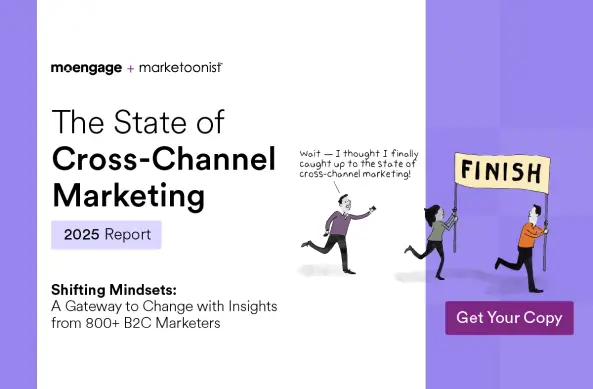Multichannel Transactional Messaging: Build/Maintain vs. Buy
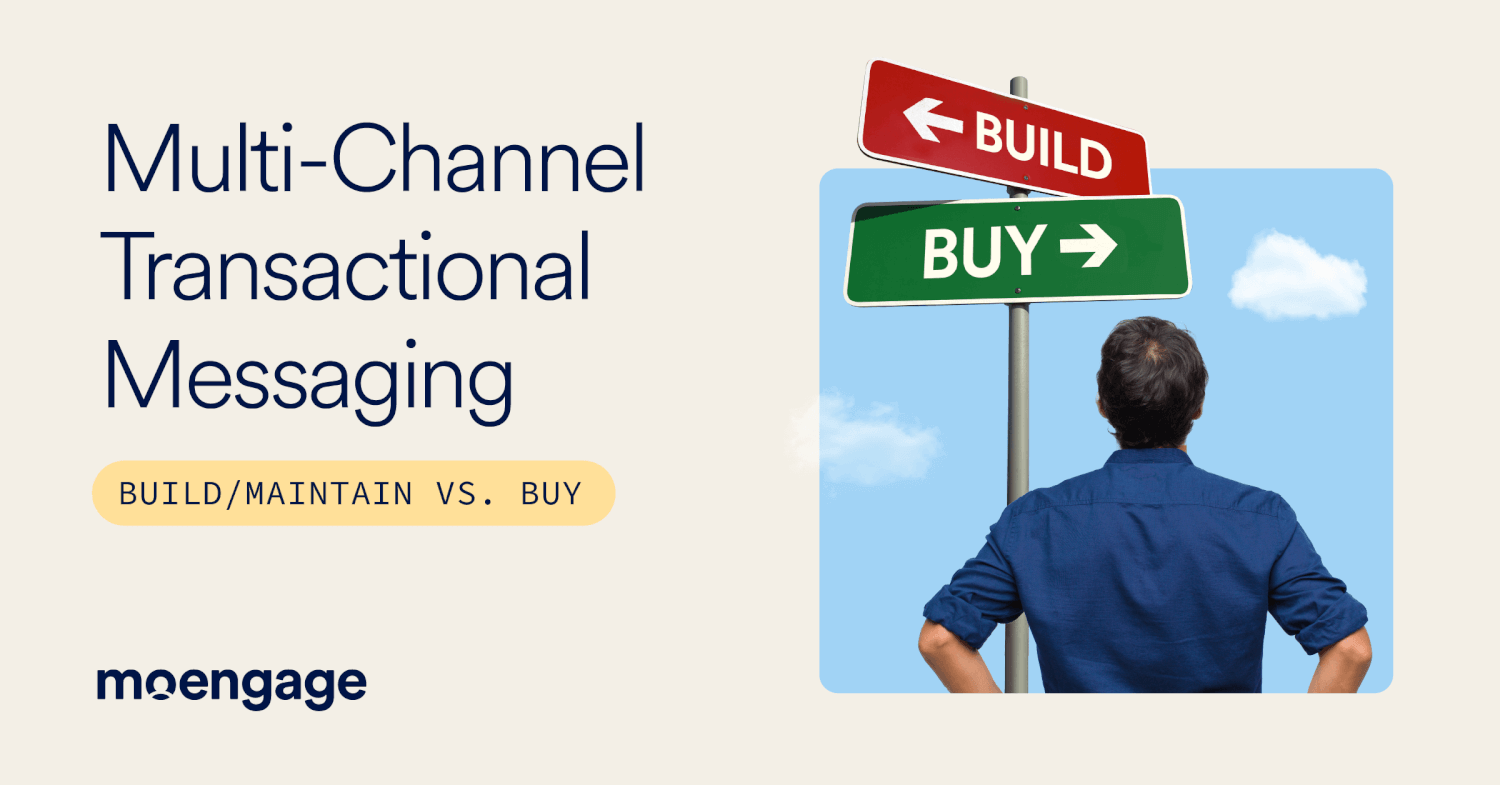
Reading Time: 11 minutes
For modern-day brands, the two most important types of messages sent to customers are promotional and transactional. While one is on stage playing the lead, the other is behind the scenes, ensuring that the play goes on. If you hadn’t already guessed, promotional messages are the lead, and transactional messages are the dark horse.
Transactional messages are often seen as operational and not given the spotlight they deserve. On the other hand, promotional messages are seen as a direct boost of revenue or sales. But in reality, transactional messages are business-critical, have higher engagement, and, more importantly, a failure to deliver them will negatively impact your brand image.
In our recent Masterclass on Nov 5, 2024, we asked three leaders from 3 functions: Product vs. Marketing vs. Engineering, for their take on scaling and managing a multi-channel transactional messaging system. The panel consisted of:
- Apurva Jaiswal, Director of Engineering at Zeta Suite
- Shaheer Usmani, Head of Marketing at Azadea Group
- Ashwin Srinivasan, Vice President of Product at MoEngage
Here’s a quick summary of their conversation, but don’t miss the complete session here:
What is Multichannel Transactional Messaging?
Multichannel transactional messaging refers to the ability to send transactional messages across multiple platforms in multiple formats:
- Email: Commonly used for receipts, order confirmations, and account notifications.
- SMS: Ideal for time-sensitive updates, such as OTPs, delivery notifications, and flight change alerts
- Push Notifications: Used for quick, cost-effective alerts on mobile or desktop applications.
- WhatsApp: Critical alerts delivered across a platform that sees consistently higher engagement across geographies
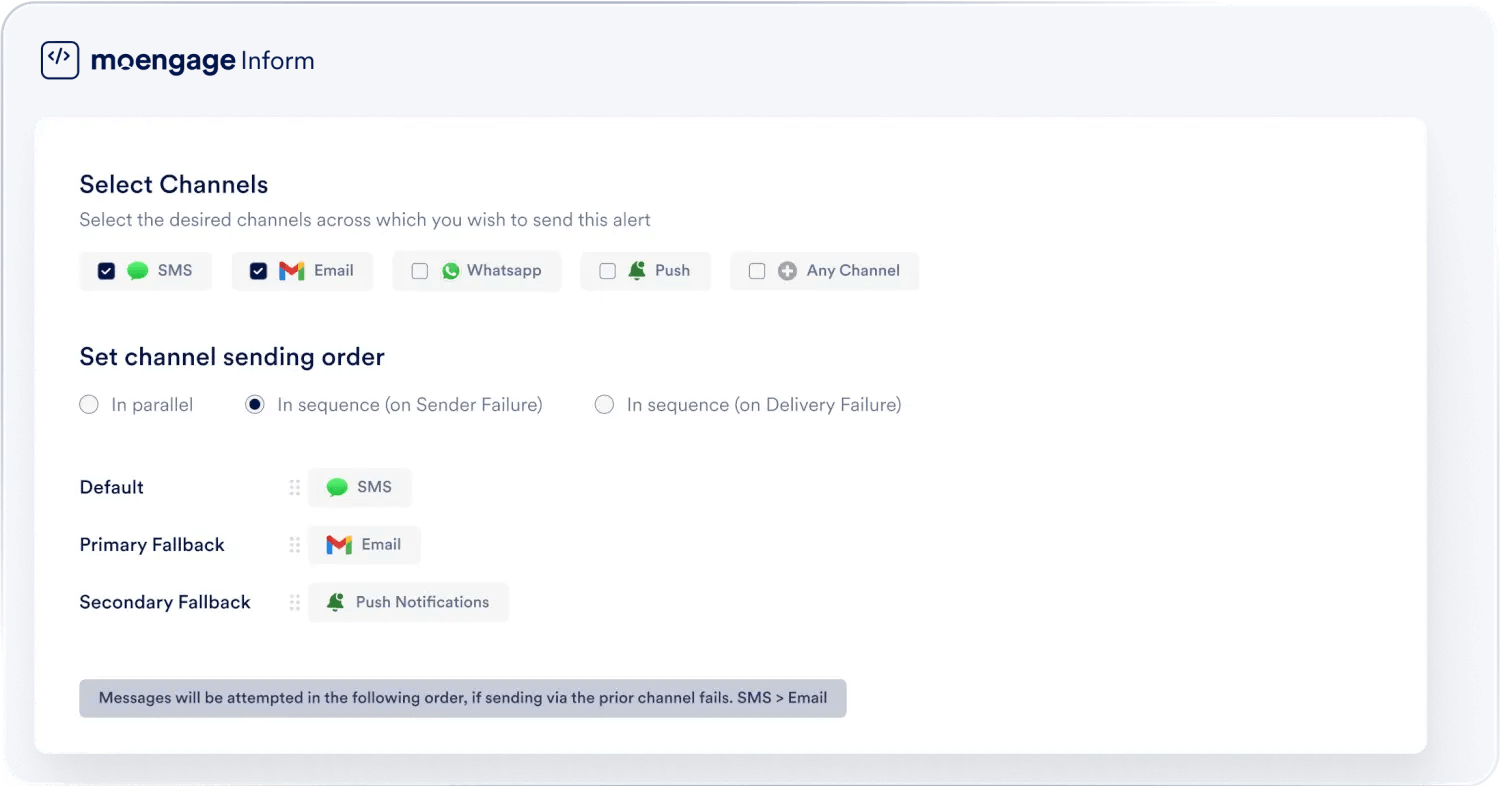
Each channel serves a specific purpose, and businesses need to adopt a strategy that integrates them seamlessly to cater to customer preferences and prevent redundancy for critical communications. For example, OTPs and shipping updates can be sent over push notifications, whereas payment reminders might serve better as emails, but account usage notifications may be better as SMS messages.
In some geographies, government regulations require that transactional messages be sent across two or more channels so customers don’t miss them. Compliance across these geographies also includes access to delivery and failure logs and privacy protections like PII masking.
The Million Dollar Question: Build/Maintain or Buy
No matter what business you run today, it’s a digital-first world. Delivering seamless, reliable, personalized transactional messages across multiple channels is a non-negotiable requirement.
From email and SMS to WhatsApp and push alerts, transactional messaging is the most important aspect of the customer communication puzzle. As organizations navigate this, they face a pivotal decision: Should they build a multi-channel transactional messaging infrastructure or purchase a third-party solution already available on the market? Both options have their unique advantages, limitations, and strategic effects.
Key Considerations: Building vs. Buying Transactional Messaging Infrastructure
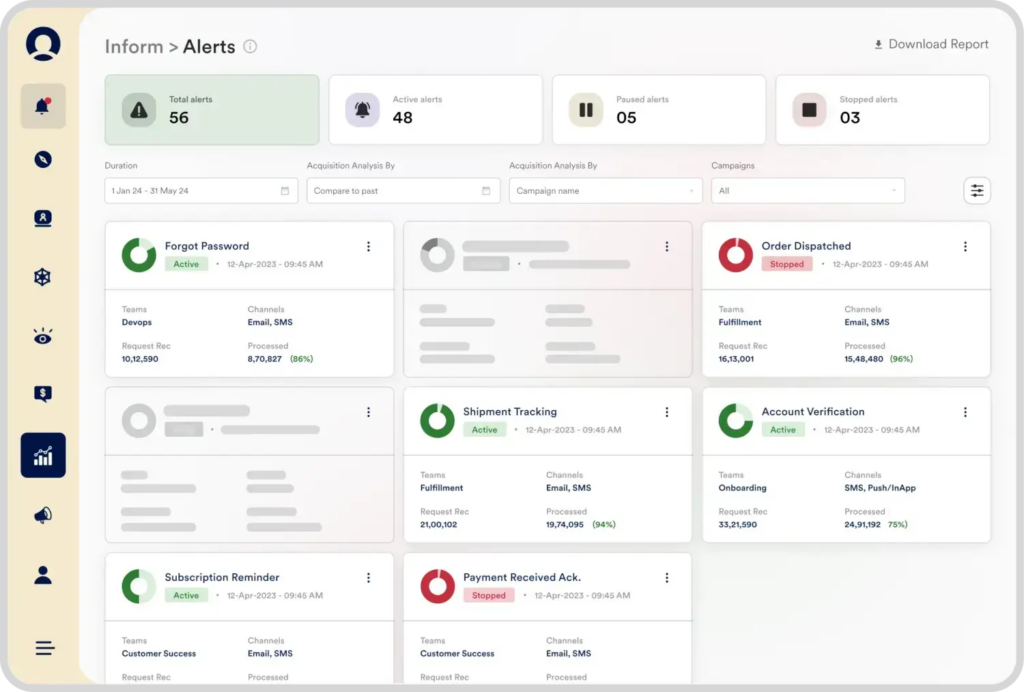
Let’s explore the complexities of managing multi-channel transactional messaging for a typical enterprise B2C brand. To start with, here are the most critical elements of a transactional messaging infrastructure:
1. Unification
The benefits of a unified messaging infrastructure for transactional and promotional messaging spill over both ways, says Shaheer Usmani. At Azadea, they started leveraging transactional messages for order updates and confirmations. While there were initial concerns that they might be sending out too many messages, the data showed otherwise — customers appreciated getting timely updates.
“As soon as we unified our transactional and promotional messaging infrastructure, we saw our NPS rating shoot up by 40 points. It went from being negative to positive, and then even better,” says Shaheer.
They also send some transactional messages with relevant promotional content, and these emails or notifications give them 4-5% higher conversion rate.
2. Instantaneous Send Time
The nature of critical alerts is such that customers cannot afford to wait a few extra seconds. Transactional messages, a.k.a critical alerts, need to be sent as instantaneously as possible, and your infrastructure should be able to handle these requirements during both peak and load situations.
For some industries, the criticality of speed stands out more than the rest: “You simply cannot have a fintech product without real-time alerting of financial activities,” says Apurva Jaiswal, “If customers don’t receive such alerts instantaneously, they lose trust in the fintech brand.”
3. Reliable Delivery
If a promotional message doesn’t go out as intended, your customers won’t miss it since they are not expecting it. However, in transactional messaging, the solution being down and unable to deliver is simply not an option. The system has to be reliable at all times to deliver these messages.
“It’s not an option,” Apurva says, “critical notifications have to be so reliable that they’re unfailing. This is the only way your customers will trust your brand.”
“People actually choose one brand over another because they know that OTPs typically get delivered on time,” adds Ashwin Srinivasan, “and that also adds to the perspective of fraud prevention and brand reputation.”
4. Scalability
Whether it’s a seasonal load or increased sending volume because of business growth, the system should be able to handle it. The infrastructure should have the ability to scale up or down in a flexible manner, based on immediate requirements for any volume of message sending.
5. Adding New Channels
When it comes to multi-channel messaging, the landscape is ever-changing. Channels that dominated the market no longer do, and newer channels have made their mark. Vendors that are reliable now may face downtime more often than you can afford. Your infrastructure should have the ability to add a new channel or vendor without a dependency on engineering bandwidth.
6. Compliance
No matter what industry you are a part of, there is a set of government-mandated rules and regulations to abide by. With transactional messaging, this typically translates to audit logs, failure reports, access management, and channel fallback. As Apurva Jaiswal points out, it is not about building the crux of the solution, but it’s important to solve for compliance, audits, and delivery logs.
7. Channel and Vendor Fallback
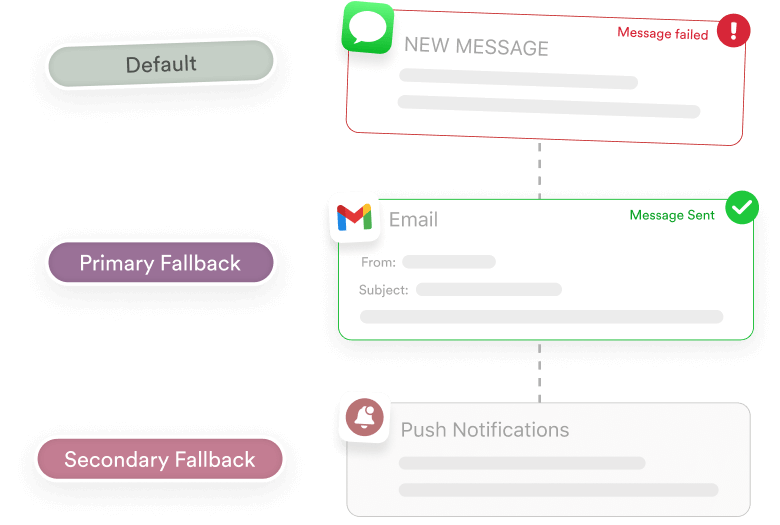
If one channel or vendor fails to deliver your critical alert, your system should automatically be able to deliver the message via a backup channel or vendor. If you’re choosing to build a solution, make sure you build with this in mind. This capability helps with both government regulations and brand image — you cannot be considered trustworthy if “critical” alerts ever fail to deliver.
8. Monitoring and Analytics
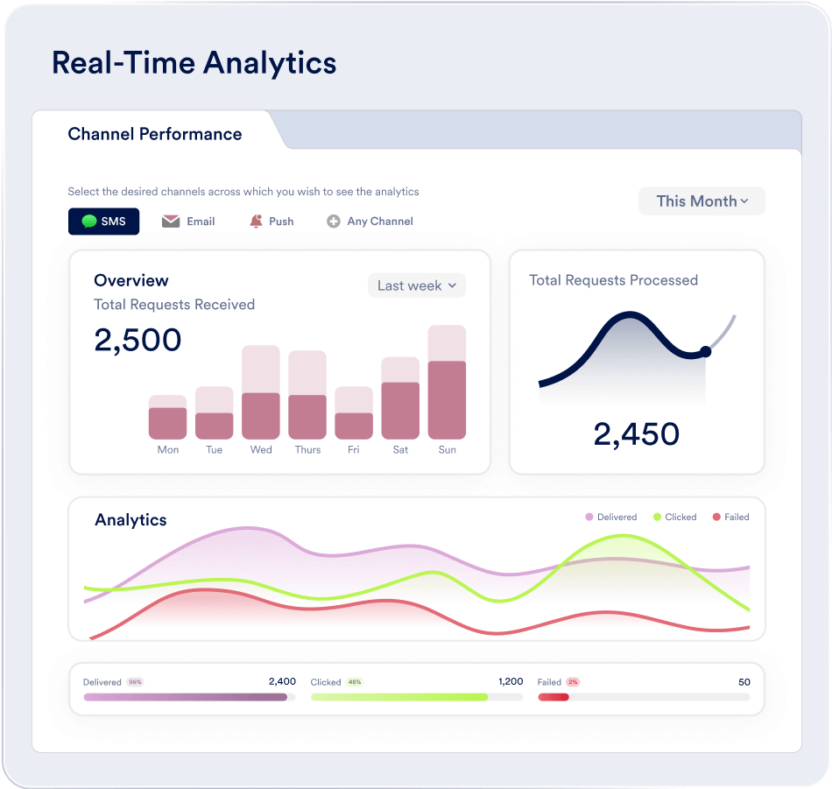
As Product, Engineering, and Marketing leaders, you understand the value of monitoring and analytics. Every transactional message is a customer relationship touchpoint. You and your team should be able to analyze every alert to understand failures and recipient logs and map these back to customer behavior in tandem with promotional messaging. As Apurva Jaiswal and Shaheer Usmani mention, features like A/B testing and analytics on the most efficient channel are crucial.
Government regulations in most countries also require brands to have access to error logs and delivery status updates, so make sure that your transactional messaging infrastructure provisions for this. These error logs also help with debugging in case of technical issues.
Now that we know what a good solution would look like, let’s compare a built solution to a bought solution to see how both would check the boxes.
Integrating With a Third-party Infrastructure
Here’s a quick look at the pros and cons of taking the “buy” route, a.k.a. integrating with a third-party solution like MoEngage Inform.
Advantages of Buying
First, let’s take a look at the pros of buying.
-
Faster Time to Market
With a plug-and-play solution, the time spent over building is eliminated. Along with this, the resources that might have been used on the build can be used to develop the business’ core functionality. Both of these factors can improve the time to market by a big margin.
-
Lower TCO (Total Cost of Ownership)
Purchasing an existing solution isn’t free, but it eliminates the need for a high initial investment and recurring maintenance costs. As Shaheer Usmani from Azadea says, “Buy, buy, buy! The third-party provider will be the specialist at delivering these messages when you can focus on your growth. If a product is available out there, use that to become bigger.”
-
Scalability
Your infrastructure should be designed to handle massive message volumes across multiple channels. With an outsourced solution, businesses can scale their messaging operations without worrying about infrastructure limitations. Even when new channels pop up, it is as simple as a few clicks to get started with alerts on the new channel.
-
Agility with New Vendors or Channels
Enterprise brands cannot rely on a single vendor or channel for things as critical as transactional messages. Because of this, at any given point in time, multiple vendors are in use for a single channel, and multiple channels are deployed as part of the overall strategy.
When a vendor or channel fails, the purchased infrastructure will automatically have a fallback mechanism in place to ensure that communications are not interrupted. This comes at no extra cost or developer dependency on the brand and does not interrupt BAU operations.
-
95% Higher Developer Bandwidth
With an outsourced solution, you can ensure that your developers spend more time building what matters for your brand, rather than focusing on functional aspects of a tool that doesn’t help with your business objectives. Internal studies from MoEngage have shown that brands can save up to 95% of developer bandwidth with a third-party solution.
-
Undivided Focus and Expertise
Established providers come with years of experience and expertise in message delivery. With a third-party solution, you get a product that gets the undivided focus of experts in the field. This applies to features, compliance, optimization and maintenance.
With Zeta Suite being a company that did both buy and build, Apurva Jaiswal says, “There are multiple things that a pre-built end-to-end product will give that is difficult to build on our own since that is not the primary business we serve.”
-
Feature-Rich Platforms
Outsourced solutions often offer advanced features like analytics dashboards, A/B testing, API integrations, and templates. These tools give product and marketing teams autonomy for taking alerts live without any tech dependencies or bandwidth crunches.
Challenges of Buying
-
Limited Flexibility
While most providers allow for customization, the control you would have over the solution and the customization level will be lesser compared to an in-house solution. Organizations with highly specific workflows may face limitations.
-
Data Syncing Requirements
Sending transactional messages using third-party applications means you will be sharing customer data to an external vendor. While this isn’t a threat on its own, it does pose a certain level of risk.
-
Vendor Dependency
Relying on a single provider can create dependency, making it challenging to switch platforms if better options arise.
Building or Managing an In-house Solution
Let’s now look at the pros and cons of building or managing an in-house solution.
Pros of Building & Managing
-
Complete Control
An in-house solution is built specifically for your business. You will have complete control over the infrastructure, interface, and operations. You can tailor every aspect of the solution to your business needs.
-
Customization and Easy Integration
Since the solution is built by your team, you can ensure that all the channels integrate easily with your existing systems. You will have a world of possibilities when it comes to customizing the solution for different systems or processes.
-
Data Protection
While this might not be a necessity for most businesses, one upside to an in-house solution is that you still control the ownership and privacy of the customer data. You will not be required to sync it with a third-party solution.
Cons of Building & Managing
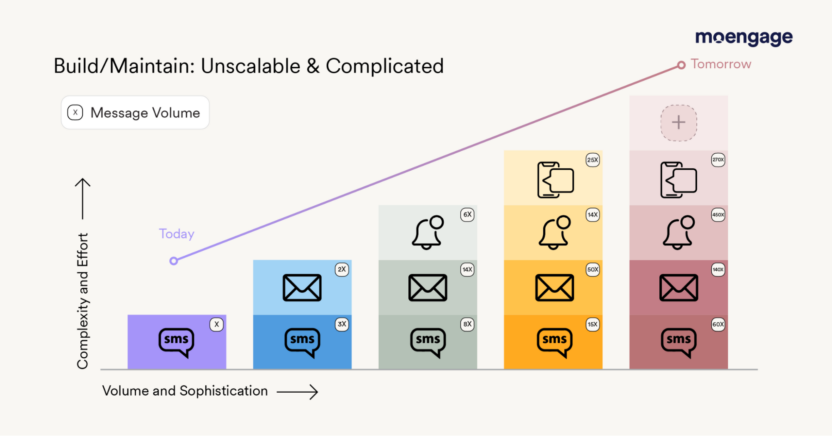
-
High TCO (Total Cost of Ownership)
While it might seem easy to build a transactional messaging infrastructure, over time, the Total Cost of Ownership starts to add up and becomes unmanageable.
This is because you would have to constantly add new channels and vendors, maintain functionality within every aspect, and at the same time ensure privacy, security, and reliability. Building and maintaining a multi-channel solution requires significant investment in both human and other hardware and software alike.
“It’s not just about building the crux,” says Apurva Jaiswal, “but, you know, building the entire product, including solving for compliance, solving for audit, solving for history of notifications sent, all of it comes as a factor. And, speaking from my experience, it takes a lot to build this entire product out.”
-
Engineering Effort
The engineering time and resources needed to build a multi-channel transactional messaging solution is massive. Even with APIs available easily, building a solution that can deliver reliably across all platforms will take a ton of engineering effort that could be spent on your core functionality instead.
-
Increased Time to Market
Building a fully functional and reliable solution that checks all the boxes could take months or years. Since this solution would be essential for your website or application to function, your time to market will be delayed. This delay could mean that your competition gets a headstart and you lose out on opportunities.
-
Maintenance Complexity and Cost
Even after the initial implementation, continuous updates, bug fixes, and compliance adaptations mean more time and resources spent on this, which take away precious developer bandwidth that could otherwise be spent on business-critical objectives.
-
Scalability Risks
When the solution is built, it is built for a specific volume, it might later struggle to scale along with the business. Unexpected increases in message volume or new channel requirements can quickly overwhelm an in-house solution.
Summing Up: To Build/Maintain or Buy
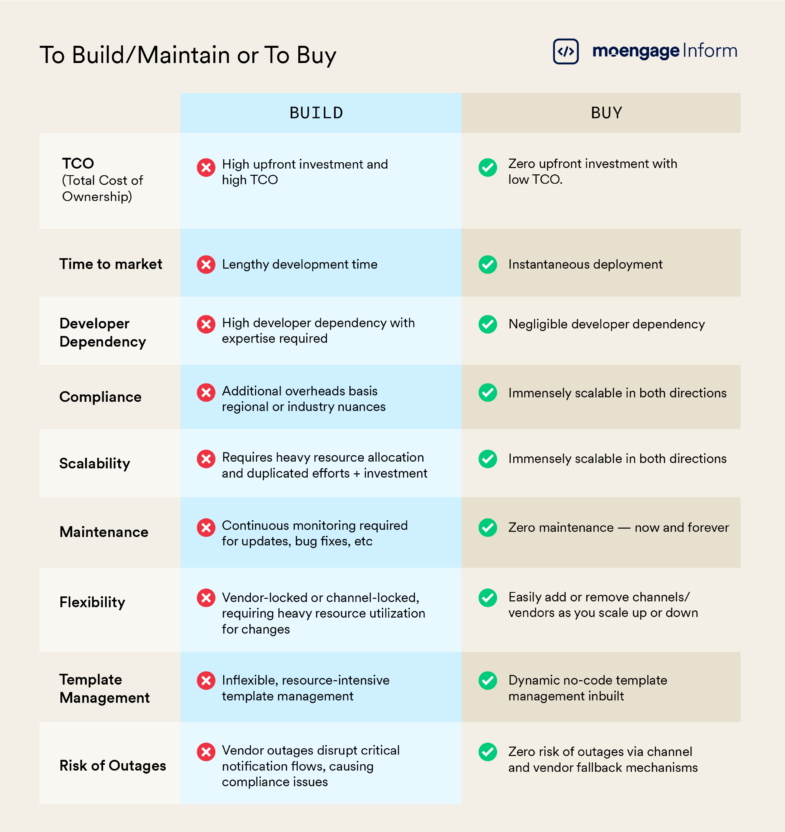
The Expert Take: Buying Outperforms Building
We can sum up the “Build vs Buy” argument with a simple analogy shared by Shaheer Usmani. Imagine you’re in a high-speed car race, and the goal is to get to the finish line first. ‘Build’ is when you source parts, assemble an effective car, and then get to the finish line with it. This could mean that, while you’re assembling the car, your competition finishes the race before you. It takes away from the time that could be better spent finding ways to win the race.
On the other hand, ‘Buy’ is simply purchasing a tried and tested high-performing car. Besides the car, you have a pitstop crew that will handle all the maintenance required for the car, and all you have to focus on is finishing first. So, why spend time reinventing the wheel when you could just get a very good one off the shelf?
Looking at the pros and cons on both sides tips the scale in favor of third-party solutions. Most of the cons of ‘buying’ can be overcome by picking a good transactional messaging platform like MoEngage Inform. The overall TCO with “buy” is also significantly lower than building or maintaining, as depicted below.
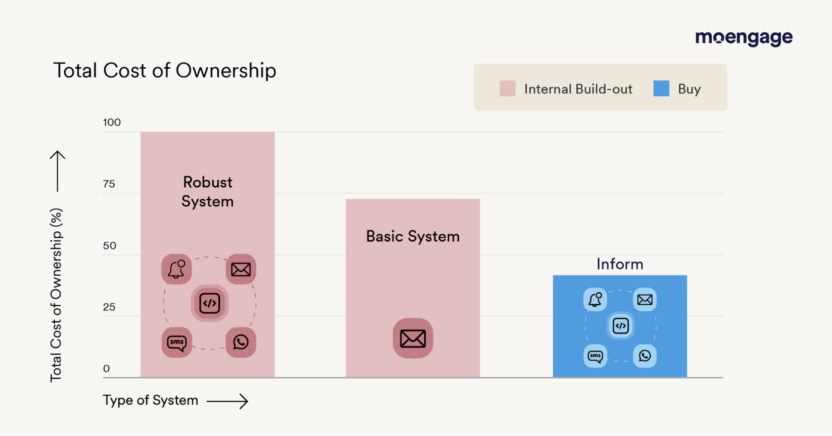
On the other hand, the disadvantages of ‘building,’ like delayed time to market, scalability risks, etc, can impact the business negatively. Here’s a look at certain scenarios where the shortcomings of ‘building’ can be detrimental:
1: A retailer facing holiday demand
An E-commerce platform with an in-house messaging system is facing the holiday demand. With the spike in volume, messages were delayed, leading to unsatisfied customers. Transitioning to a third-party platform resolved the issue instantly. The provider’s scalable infrastructure handled millions of messages per minute, ensuring timely delivery during peak shopping periods.
2: A fintech company in need of compliance
A fintech business operating in multiple regions struggles to maintain compliance with varying regulations for messaging and email. By adopting a third-party messaging solution with built-in compliance features, the company eliminated fines and streamlined its legal workflows, allowing the team to focus on expanding its product offerings.
If you’re still worried about missing out on the pros of building, here are ways in which they can be overcome:
-
Flexibility
Third-party providers like MoEngage Inform offer extensive customization options through APIs and dashboards. It’s as simple as a few clicks to add or remove a channel/vendor. Businesses can maintain control over branding, workflows, and data while benefiting from the provider’s expertise and infrastructure.
-
Data Ownership
Providers like MoEngage Inform prioritize data security, offering encryption, GDPR compliance, PII Masking, and strict access controls, apart from global and regional security and data privacy certifications.
What Is MoEngage Inform?
MoEngage Inform is a unified transactional messaging infrastructure that lets you set up and send critical alerts across channels and vendors through a single API. You can send WhatsApp, Email, SMS, and Push alerts through a unified interface in real-time, with <3 second send time and automatic failover mechanisms. MoEngage Inform also lets you add a new vendor or channel in just a few clicks, saving weeks of effort and critical developer bandwidth.
Think you might need it? Check it out.

